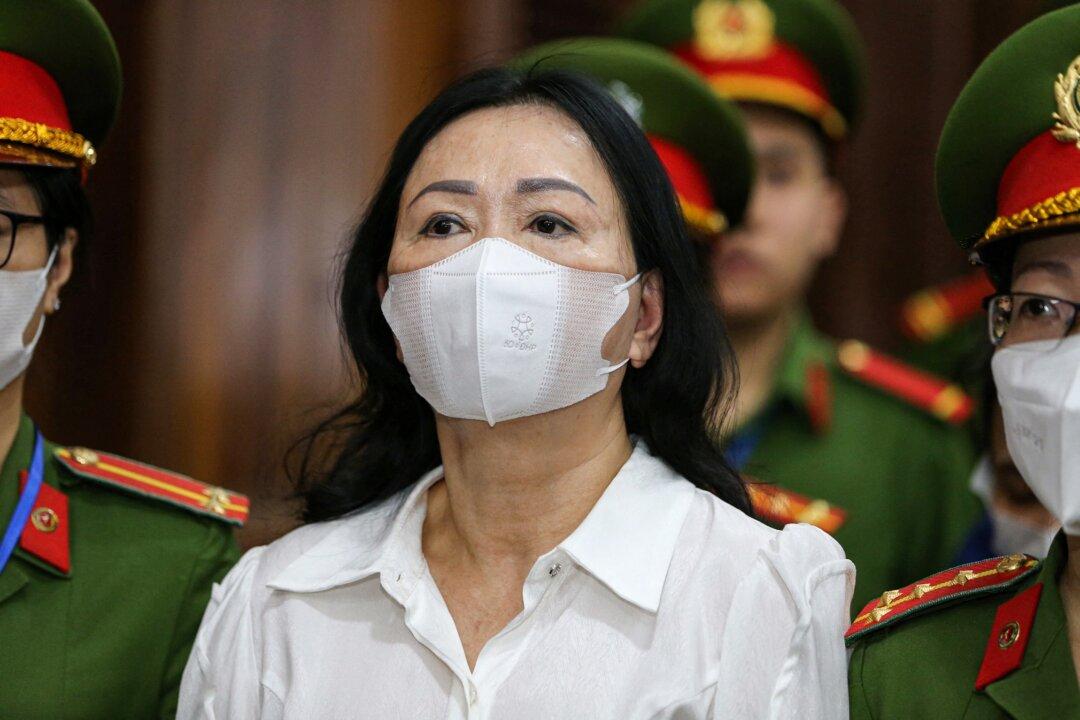No fewer than 85 people were found guilty in Vietnam on April 11 in the country’s largest-ever fraud case, with a 67-year-old woman who was the center of the operation receiving the death penalty.
Real estate tycoon Truong My Lan, chairwoman of Van Thinh Phat Holdings Group, was found guilty of defrauding the Saigon Commercial Bank—which she indirectly controlled through proxies—of more than 304 trillion dong (more than $12 billion) over the course of 11 years.
On April 11, Ms. Lan was sentenced to death for embezzlement and received 20 years each for the charges of bribery and violations of banking regulations.
According to state media, the 2,500 loans that Ms. Lan had approved through her influences between 2012 and 2022—and which made up 93 percent of all of the bank’s lending—financially affected 42,000 victims and resulted in $27 billion losses to the bank.
According to prosecutors, at one point, over the duration of three years, Ms. Lan ordered her driver to withdraw 108 trillion Vietnamese dong in cash—an amount of paper reported to weigh more than 2 tons—from the bank and store it in her basement.
All of the other defendants in the case—mainly former bankers and ex-government officials—were found guilty. Four were sentenced to life in prison, and others received sentences ranging from three years of probation to 20 years in prison. Among them was Ms. Lan’s husband, a businessman from Hong Kong, who was sentenced to nine years in prison, and her niece, the CEO of Van Thinh Phat, who was sentenced to 17 years in prison.
Ms. Lan had pleaded not guilty to the embezzlement and bribery charges, one of her lawyers told Reuters.
Spectacular Trial
Vietnam’s communist authorities abandoned their habitual secrecy for the duration of the trial. The case constitutes the most dramatic episode thus far in the government’s anti-corruption campaign, which has already led to the resignation of two presidents and two deputy prime ministers, as well as disciplinary actions against hundreds of officials, since its launch in 2016.Ms. Lan’s trial began in October 2022 and involved 10 state prosecutors, 200 lawyers, 2,700 witnesses, and 104 boxes of evidence weighing a total of 6 tons, according to state media.
Rise and Fall of a Tycoon
According to state media, Ms. Lan began her career selling cosmetics at the central market in Ho Chi Minh City with her mother, a Chinese businesswoman.In 1992, the same year that she married, Ms. Lan founded her real estate company. Vietnam had since abandoned its state-run economy in favor of a more free market-oriented approach, and businesses had begun to flourish.
However, being a communist country, all land in Vietnam is officially owned by the state. Access to property often depends on personal relationships with state officials, and as the economy grew, so did corruption. Ms. Lan, like many, took the opportunity and began to build her empire.
By 2011, Ms. Lan had become a well-known developer, and she was allowed to arrange the merger of three smaller banks into a larger entity: Saigon Commercial Bank—a financial institution in which she owned more than 90 percent of the shares through hundreds of shell companies and numerous proxies. Vietnamese law prohibits any individual from holding more than 5 percent of any bank.
In her final statement to the court, Ms. Lan confessed to contemplating suicide, saying, “In my desperation, I thought of death,” state media reported.







